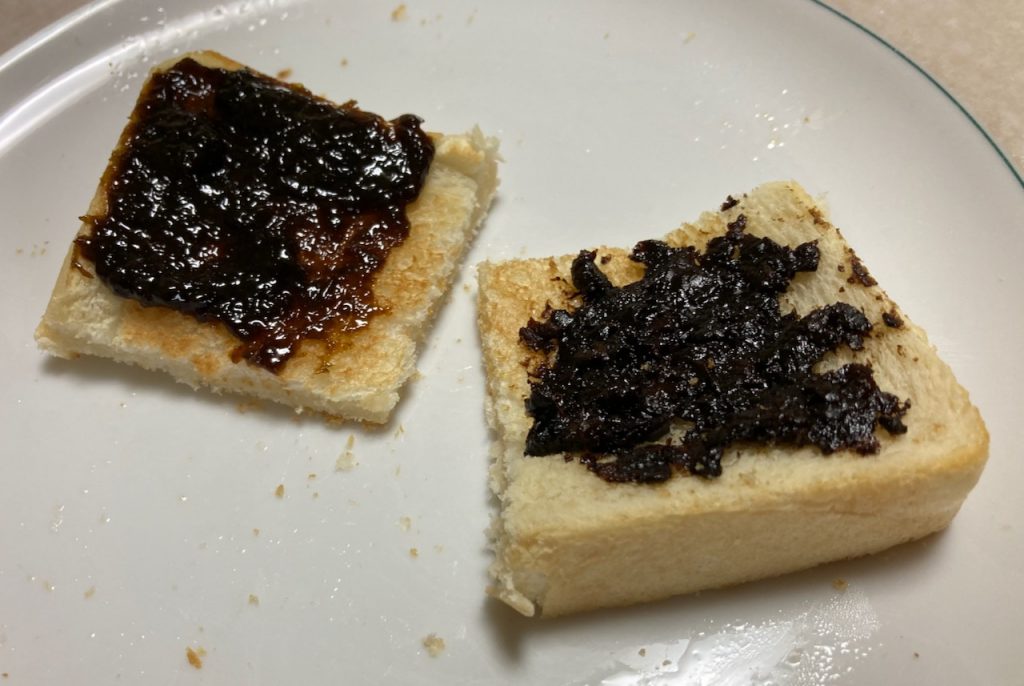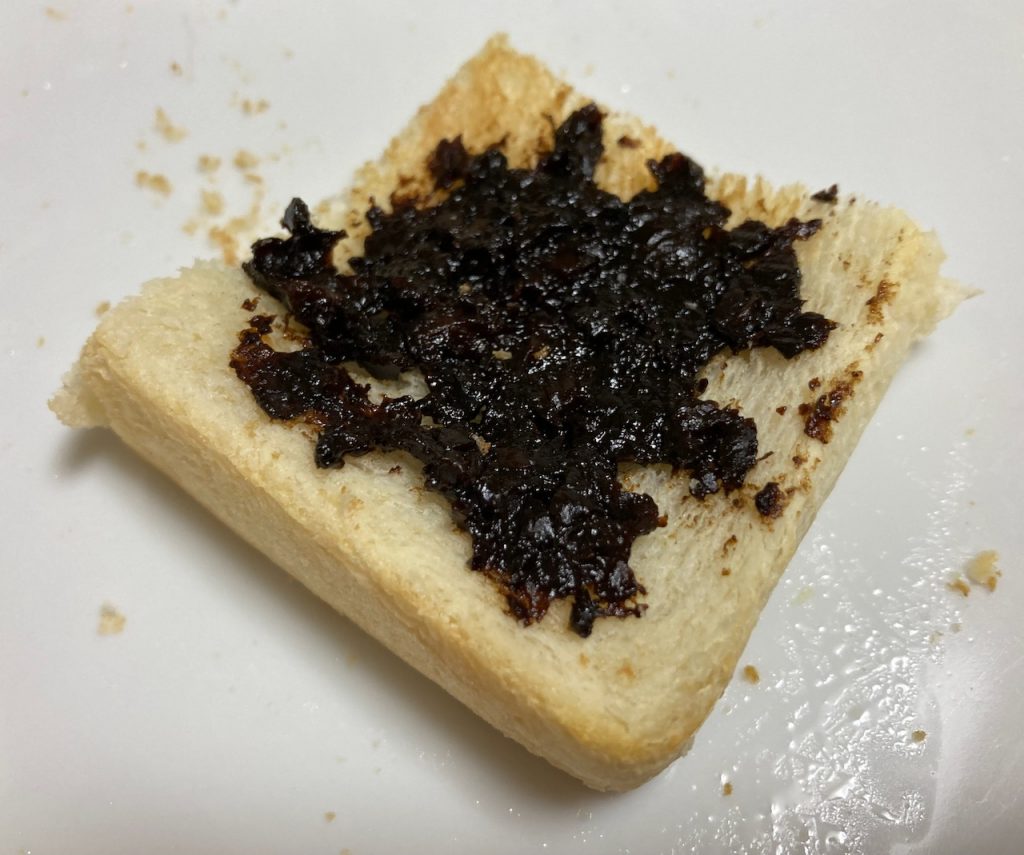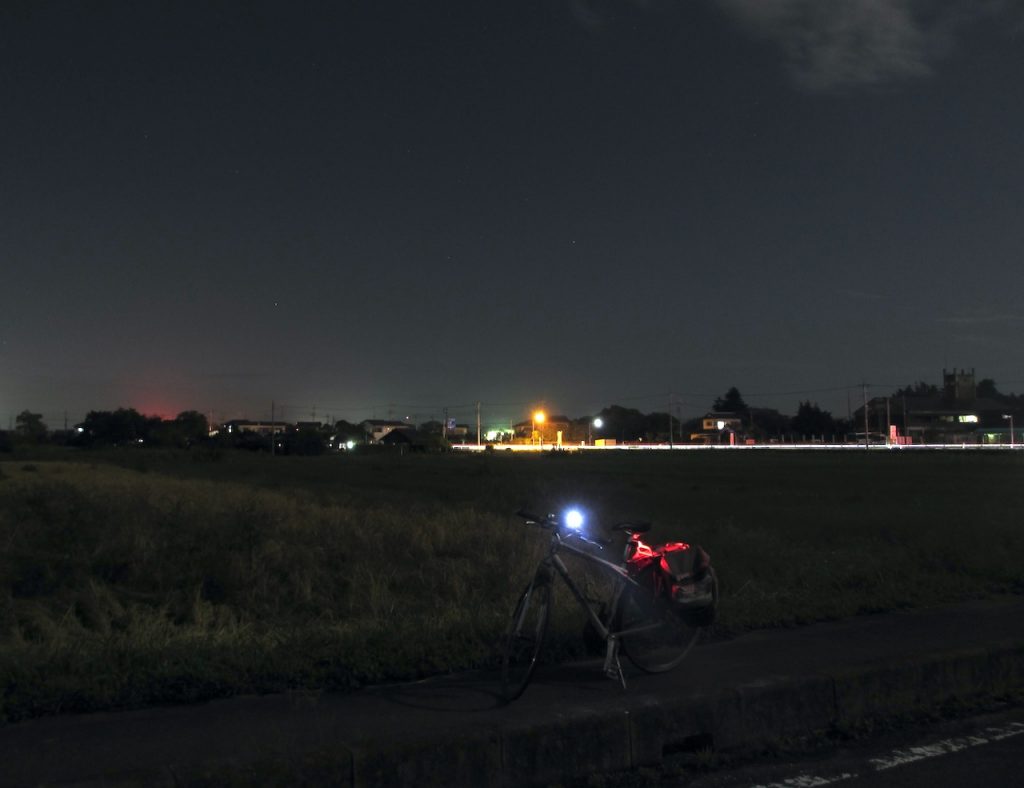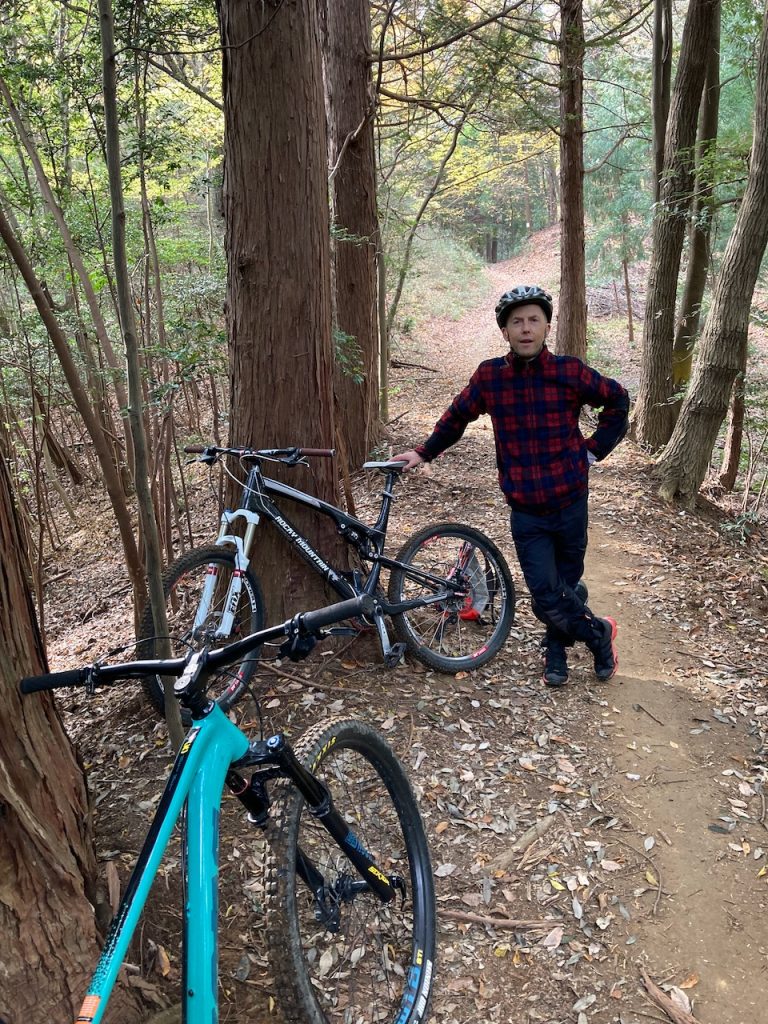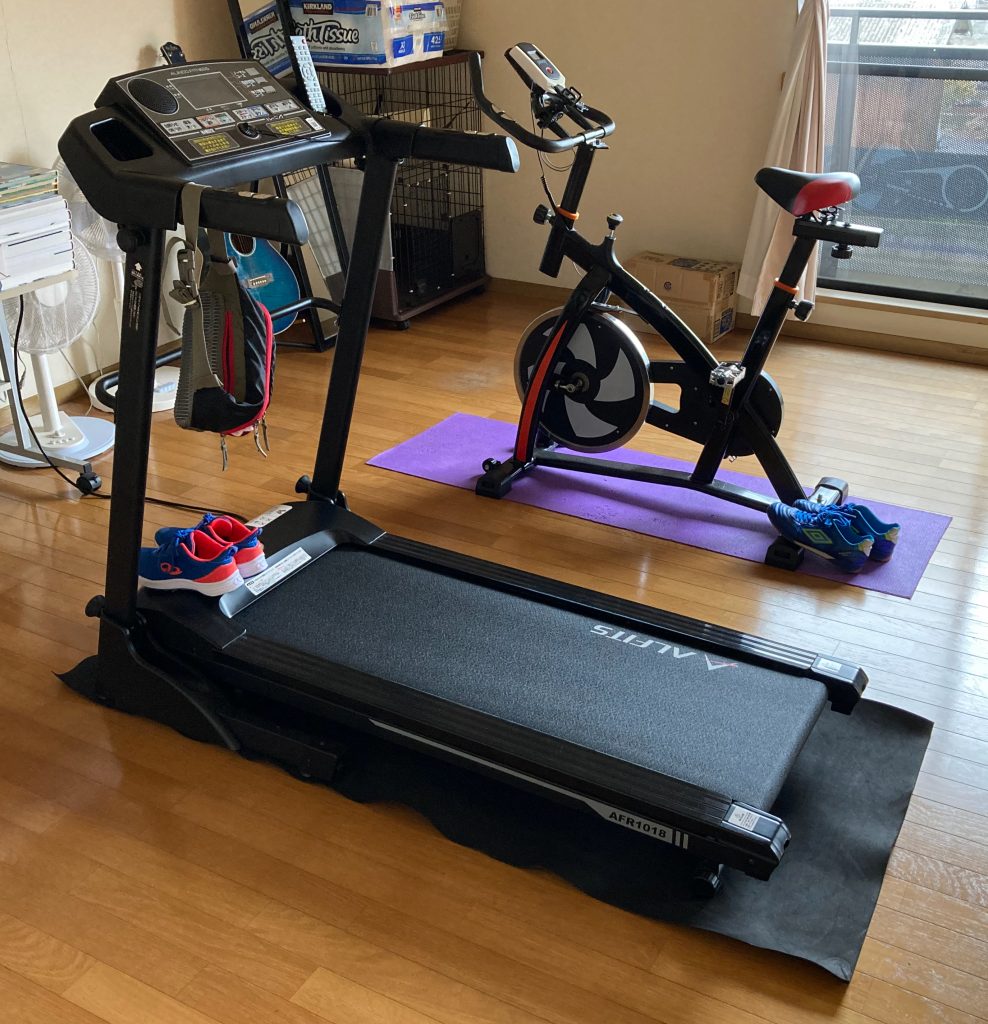
I’ve only ever joined a gym once and that was out of necessity. I was in training for the London Marathon (which sounds very grand, although in the end, it took me nearly five hours to complete the course) and during training I got injured. I went to my local GP, who was of absolutely no help whatsoever. He prescribed some pain-relieving gel, which wasn’t going to solve the problem at all, so I booked an appointment with a physiotherapist whose office was in a gym next to Clapham Junction station. My original intention wasn’t to join the gym, but one of the things that she advised me in relation to the injury – the diagnosis was shin splints – was that I should avoid running on tarmac, concrete, uneven surfaces, and so on for the time being. So I paid my 40 pounds a month and very reluctantly started to go to this gym about three or four times a week.
A very nice guy who worked there talked me through various warm-up exercises and suggested an exercise routine. (He turned out to be a jazz trumpeter, so we went to one or two jazz jam sessions together as well, although that’s by the by.) I remember using a rowing machine and lifting some weights, but I don’t remember much else, apart from the fact that I spent a lot of time on the running machines. There were only a limited number, so sometimes I wasn’t able to run for as long as I wanted or I wasn’t able to run at all. But thanks to the gym and in particular the physiotherapist, my injury improved sufficiently that I could take part in the marathon.
My final major indoor training session involved running on one of the running machines for three hours. I did take a break once or twice, but I remember watching the entire FA Cup final and still needing time to carry on running for about another hour after it finished. I never used an exercise bike in the gym, but I remember that they had those exercise bike classes where the teacher sits on their bike in the middle, everybody sits on their bikes in a semi-circle around the teacher, and they go through a routine which is supposedly going to make them super-fit.
Cut to approximately 20 years later and Mrs M took up jogging here in Japan. When it was dark, she used a headlight and a reflective sash, but she still slipped and fell on one occasion and was nearly hit by a car on another. She was also rather worried about who might be lurking on those poorly lit backstreets and one day said that she’d like to get a running machine.
I was very much averse to this idea, but began looking on Jimoty, which is the Japanese equivalent of Freecycle in the UK (although by no means all of the items available on Jimoty are free). It’s a site where you can search for items within your prefecture and within the prefecture, the location of the person trying to offload it is listed, so you can also choose to purchase items being sold or given away by people who only live within a few kilometres of your house. I was lucky to find a running machine that, had we bought it in an electrical store, would have cost about 60,000 yen. The woman who listed it on Jimoty was selling it for 10,000 yen. It wasn’t brand new, but it was in perfect working order. The only problem was that it was very heavy and when I went to collect it from the woman’s house, which was about 50 minutes’ drive away from where I live, she had a friend of hers help me lift it into the car. Then when I arrived home, Mrs M helped me carry it upstairs and we probably both came within a hair’s breadth of giving ourselves hernias in the process.
We had to put it upstairs because the house where we live has one unnecessarily large bedroom on the second floor (first floor if you’re British) and because I was injured again – this time with a pulled hamstring. Rather against my will, I then started looking on Jimoty for an exercise bike. The reason that I managed to take advantage of the bargain-priced running machine is because it wasn’t listed using the accepted Japanese term for a running machine, which meant that when people were searching for running machines, the listing didn’t pop up in their search results. There are at least three different terms for an exercise bike in Japanese, and the man who listed the one that I ended up buying used the less well known of the three, which meant that I bought quite a nice exercise bike for about 6000 yen – less than half the price it would have cost to buy the same one new.
Most of the ones available in the shops and on sites like Jimoty necessitate a very unnatural sitting position, in the sense that you’re sitting up straight and your legs are slightly in front of you, which isn’t the kind of position that I’m used to with my cross bike. I almost bought one of those, but the person who I sent to message to didn’t respond. In this end, M Jr II and I drove a long way into neighbouring Tochigi Prefecture to buy an exercise bike with a more conducive sitting position.
That was about a year and a half ago and since then, I’ve ridden more than 2000 kilometres indoors and on the spot. I can’t say that I enjoy it, but if you have a routine that involves jogging and cycling every other day, if it’s chucking it down with rain (or snowing, as it has several times this winter), if I can’t be bothered to go outside, or if Mrs M is working and I can’t leave the children alone in the house, then an exercise bike and a running machine are – I will now very grudgingly admit – quite helpful tools to have in the house.
The main disappointment about exercising indoors is that there’s nothing to look at. I set up a TV for Mrs M to watch while she was using the running machine, but I find that I can’t really concentrate on the image on the screen while I’m moving. When I’m on the exercise bike, I listen to podcasts and music using the speaker on my iPhone. On the running machine, because it’s so noisy, it’s much better too listen on headphones, although another thing about the bike is that there’s no view. You can’t look at the scenery, you can’t watch the cars go past, you can’t look up at the sky, and you can’t look around and see anything interesting apart from a couple of posters on the wall.
As explained in this podcast interview (if you do listen, fast forward to about 26 minutes in if you want to avoid the sponsors’ ads and another, extraneous interview) with a very interesting guy called Andrew Huberman, it’s very therapeutic to go walking or jogging or cycling and have a view around you that is panoramic, in the sense that you can look to your left, to your right, look up, look down, look behind you, look in front of you, and see a long way into the distance when you do so. Another thing that Huberman has pointed out on his own podcast is that sports like cycling, skiing, snowboarding, skateboarding, and surfing involve moving forward, but also leaning from side to side as you turn corners, and this has been scientifically proven to be a pleasurable experience for the people taking part. Something goes on in your brain when you are moving forward and leaning from side to side that releases some kind of happy chemical and makes you feel good. He explained this by saying that a lot of surfers and skateboarders are basically slackers, but when it comes to their hobby, are willing to get up very early in the morning, travel a long way, and go through a certain amount of hardship to enjoy it.
An annoying thing about my exercise bike is the gears – or rather, the lack of them. There is a knob on the frame that you can turn anti-clockwise or clockwise to make pedalling easier or more difficult. The knob operates a kind of pad that creates more or less friction on the front wheel (there is, of course, no back wheel). For starters, my children and any other children who happen to come to the house enjoy (ahem) fiddling with my knob, and if I get on the bike after they’ve been playing in the big bedroom – aka our home gym – it’s either far too easy and the pedals rotate like some kind of comedy cartoon at a million miles an hour, or it’s far too difficult and even if I stand up and put all of my weight on the pedals to make the first turn, they don’t move at all. I suppose not having a click as the bicycle goes into the next gear, and not having three, five, or eight gears arranged in increments to denote a particular ratio, is a good thing because it means you can find exactly the right setting for the amount of effort that you want to exert. Ultimately, though, it’s very difficult to find that sweet spot and I find myself adjusting the knob not constantly, but far more often than I would adjust the gears when I ride outdoors.
Speaking of children fiddling with your knob, we had a party about this time last year and various children are playing upstairs in the home gym. Myself a friend of mine, Mr. Ireland, were chatting away and keeping half an eye on what the children were doing when all of a sudden, M Jr II started shouting at me to stop the running machine. He said that something was stuck in the machine and when I looked down, I saw a kind of purple blob protruding from the front of the conveyor belt.
“Oh, don’t worry,” I said. “It’s just a balloon. It’ll pop.”
But M Jr II kept insisting that I do something about it. After closer investigation, myself and Mr. Ireland realised that it wasn’t a balloon at all, but a kind of beach ball that the children had been throwing around the bedroom. We put the running machine on its side, got a screwdriver, opened it up, extracted the now squashed beach ball, and made sure that none of the wiring and so on had been damaged. A plastic cover that protects the insides of the machine had snapped away at one or two of the screws, but fortunately it still worked.
When I was injured and joined a gym, I did my training, ran the marathon, and immediately cancelled my membership once it was over. (I also stopped running for the best part of 15 years.) But of course, many people resolve – for example, after Christmas and the New Year when they’ve eaten too much, drunk too much, and put on weight – to join a gym and get fit. What happens is that they sign on the dotted line, submit their credit card details, and the monthly fee disappears from their bank account. By April or May, they’ve already stopped going. Part of them feels guilty about this and part of them is determined to keep going: maybe next week, maybe the week after.
The same rule applies to buying fitness equipment for your home. I don’t know the statistics, but I would wager that well over 90% of fitness equipment in the home is lying in a corner, unused and gathering dust. The mother of a friend of M Jr’s came to our house a couple of months ago and saw our running machine for herself.
“Can I have a go?” she asked, to which Mrs. M said, “Of course. Take your time. This is how you switch it on. See what you think.”
This friend – let’s call her Ms. Tochigi – was so impressed that she went out the next day and bought a brand new running machine from an electrical store for 60 or 70,000 yen. She put it in a spare bedroom with the intention of getting fit, but when we saw her again recently and I asked, “How’s the running machine coming along? Are you using it every day?” she replied, “Actually, I haven’t even taken it out of the box yet.”
“Well,” I said, “you could always sell it on Jimoty.”
